Shortly after purchasing the Louisiana territory from France in 1803, President Thomas Jefferson ordered an expedition to explore and map the newly acquired territory and establish an American presence before Britain and other European powers tried to claim it. The campaign’s secondary objectives were scientific and economic: to study the area’s plants, animal life, and geography, and establish trade with local Native American tribes. To lead the expedition of U.S. Army volunteers, Jefferson chose his personal secretary, Captain Meriwether Lewis, an intelligent and literate man who also possessed skills as a frontiersman. Lewis, in turn, solicited the help of Second Lieutenant William Clark, whose abilities as draftsman and frontiersman were even stronger.
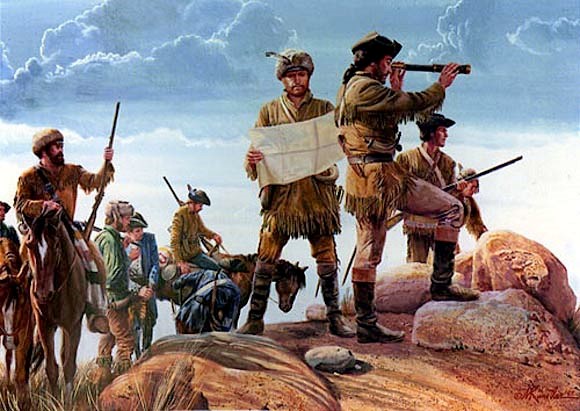
Lewis and Clark Met the Nez Perce Before the War
Lewis and Clark’s expedition began on May 21, 1804, when they and 33 soldiers and others departed from their camp near St. Louis, Missouri. The first portion of the expedition followed the route of the Missouri River, during which they passed through places such as present-day Kansas City, Missouri, and Omaha, Nebraska.
As the expedition crossed the Bitterroot Mountains along the border of Montana and Idaho, a party of six hunters led by Clark went ahead of the main body, searching for wild game and other foodstuffs. Near the western end of the Lolo Trail, the group came across a small camp of Nez Perce. Having a long association with French trappers and missionaries, the Nez Perce – many who had converted to Catholicism – welcomed the American explorers, treating then with generosity and respect. They also resupplied and aided the Army expedition.
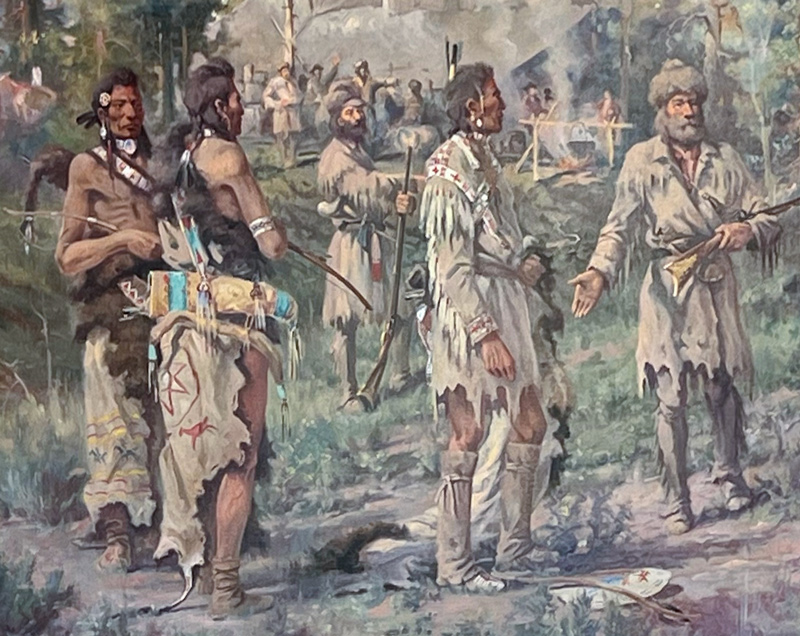
After staying with the friendly Indians for days, the explorers continued their journey by boat to the Pacific. Horses were left with the friendly Indians to care for until the explorers returned. Faithful to the trust, the Indians returned the horses to the Americans without serious difficulty.
Friendship With the Nez Perce Turned Into War
Unfortunately, like many other western tribes, this original goodwill would change due to the westward movement of European Americans and the discovery of gold on traditional Indian lands.
For the Nez Perce tribes, it was when prospectors found gold on their reservation in 1860. This discovery led to a rush of settlement on the tribe’s ancestral lands. Tensions inevitably grew as the settlers appropriated traditional native lands, and prospectors searched for gold with no regard toward their nomadic lifestyle.
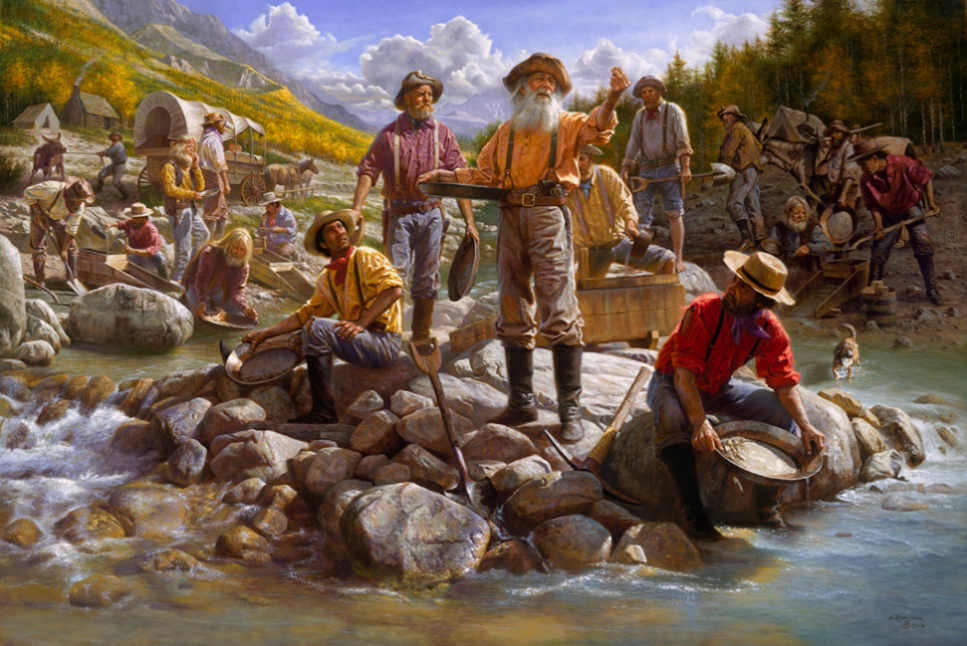
They realized a severe problem was growing between the friendly Nez Perce and the European American. They believed it was their Manifest Destiny (which held that the U.S. was destined to expand from coast to coast), the U.S. government took the same action they had done repeatedly when it came to relationships with the Indians: instead of forcing the white settlers to leave, the government’s solution was to reduce the land on which the Indians could live, forcing them into smaller and smaller reservations.
Broken Promises Fueled the Nez Perce War
Like Indian tribes throughout America, the Nez Perce did not have one chief in charge of the entire tribe. Instead, there were many Chiefs who were each leader of small bands of Indians.
When the United States tried to reduce the Nez Perce tribe’s land, they negotiated mostly with the Chiefs that were on their side. This led to the Nez Perce spitting into two groups: one side – the farmers and livestock herders – accepted the coerced relocation to a reservation. The non-treaty group refused to give up their ancestral homeland in Idaho and Oregon and continued living in the tradition they had been doing for hundreds of years.
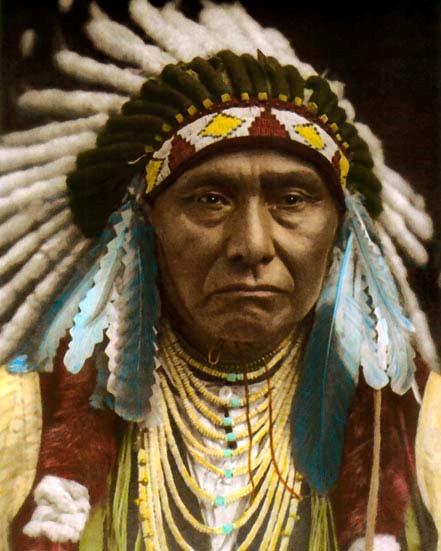
Chief Joseph Led the Nez Perce War
The non-treaty Nez Perce suffered many injustices at the hands of settlers and prospectors, but out of fear of reprisal from the militarily superior Americans, Chief Joseph of the Wallowa band never allowed any violence against them, instead of making many concessions in hopes of securing peace.
In 1873, Chief Joseph negotiated with the federal government to ensure his people could stay on their land in the Wallowa Valley. But in 1877, the government reversed its policy and Brig. General Oliver Howard threatened to attack if the Wallowa band did not relocate to the Idaho Reservation with the other Nez Perce. Joseph reluctantly agreed.

The day following the council, Chiefs Joseph, White Bird, and Looking Glass all accompanied Howard to look at different areas. Howard offered them a plot of land that was inhabited by whites and Native Americans, promising to clear out the current residents. Joseph and his chieftains refused, adhering to their tribal tradition of not taking what did not belong to them.
Unable to find any suitable uninhabited land on the reservation, Howard informed Joseph that his people had 30 days to collect their livestock and move to the reservation or face a war they could not win.
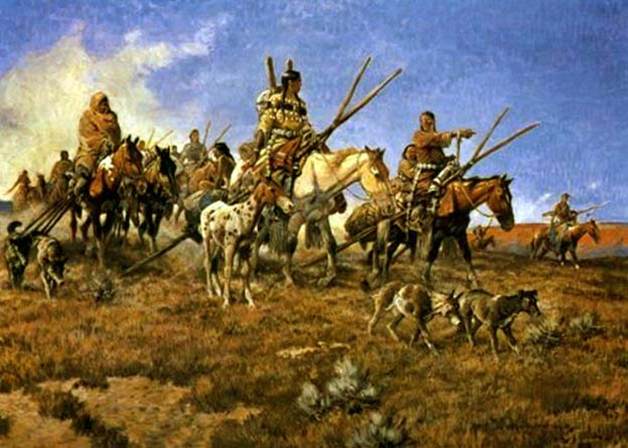
Returning home, Joseph called a council among his people. At the council, he spoke on behalf of peace. Chief Toohoolhoolzote advocated war. The Wallowa band began making preparations for the long journey, meeting first with other bands at Rocky Canyon. At this council too, many leaders urged war, while Joseph argued in favor of peace. While the council was underway, a young man whose father had been killed rode up and announced that he and several other young Nez Perce warriors, disillusioned by broken treaty promises and white encroachment on their land, attacked and killed some white settlers along the Salmon River. The elders first hid the firebrands, but Joseph knew that retribution would shortly follow, and he reluctantly prepared for war.
Still hoping to avoid further bloodshed, Chief Joseph, Chiefs Looking Glass, White Bird, Ollokot, Lean Elk (Poker Joe), and Toohoolhoolzote lead 2,900 men, women and children away from Idaho in an attempt to reach a peaceful sanctuary. The flight began on June 15, 1877.
Battles Marked the Nez Perce War’s End
During their exodus toward Canada, they had numerous battles and scrimmages with Gen. Howard’s cavalry troops. The opening battle between the Nez Perce Indians and the two companies of the U.S. 1st Cavalry Regiment took place at White Bird Canyon in the Idaho Territory on June 17, 1877. Although the Nez Perce had no experience of war with white soldiers, their knowledge of the terrain and their superb horsemanship and well-trained Appaloosa horses were advantages. The Nez Perce were also good marksmen. By contrast, many U.S. Cavalry horses panicked in the battle, and that fear caused a major defeat for the U.S. Army. Knowing they could not engage Howard’s full army of 2,000 men, the Nez Perce fled north.
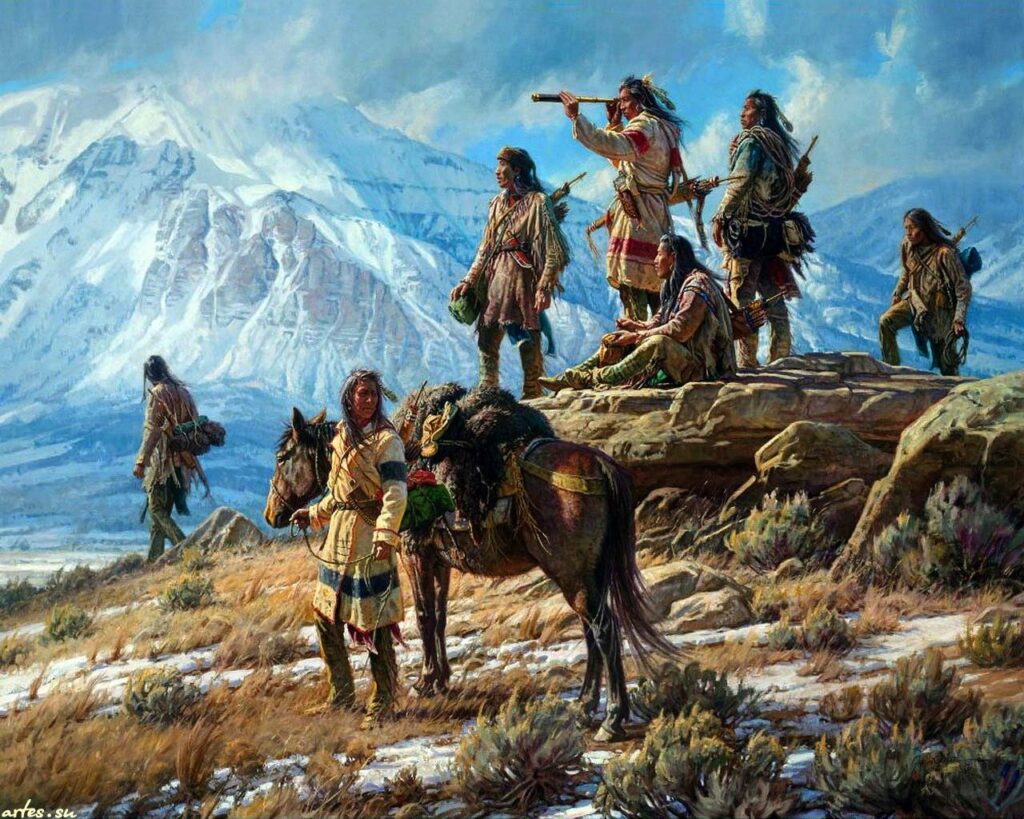
The next big battle took place on July 11 – 12, 1877, on the Clearwater River, where the Nez Perce had set up a temporary village. Gen. Howard surprised the Indians by a surprise attack. The Nez Perce counter-attacked and inflicted significant casualties on the soldiers, but they were forced to abandon the village. After the battle, the Nez Perce retreated to the east and began to cross the Bitterroot Mountains via Lolo Pass with Gen. Howard in hot pursuit. They hoped they could leave the Army behind and live with their old allies, the Crow, who lived on the other side of the mountain range. Little did they know, the difficult passage across the Bitterroots was only the beginning of a long, difficult, and deadly trek.

The third battle of the Nez Perce War began on August 9, 1877. Fleeing eastward with hopes of escaping to Canada, the Nez Perce made camp in the Big Hole Basin in present-day western Montana. In the early morning hours, Col. John Gibbon attacked the sleeping Indians with a force of 183 men. Raking the Indian lodges with withering rifle fire, the soldiers initially seemed to be victorious. The Nez Perce, however, soon counter-attacked from concealed positions in the surrounding hills. After four days of sporadic fighting, both sides suffered serious casualties. The soldiers lost 29 men with 40 wounded. The army body count found 89 Nez Perce dead, mostly women and children. The battle dealt the Nez Perce a grave, though not fatal, blow. The remaining Indians were able to escape and headed northeast towards Canada.
The Indians moved through the Lemhi Valley with the Army in pursuit. The next battle would be a big victory for the Nez Perce. At the battle of Camas Meadows, a small group of Nez Perce warriors circled back and snuck into the Army’s camp. Instead of attacking the soldiers, the target was their horses. The stealthy warriors broke through the stockade and stole over 200 horses and mules. This clever move was a big blow to the Army’s supply and transportation.
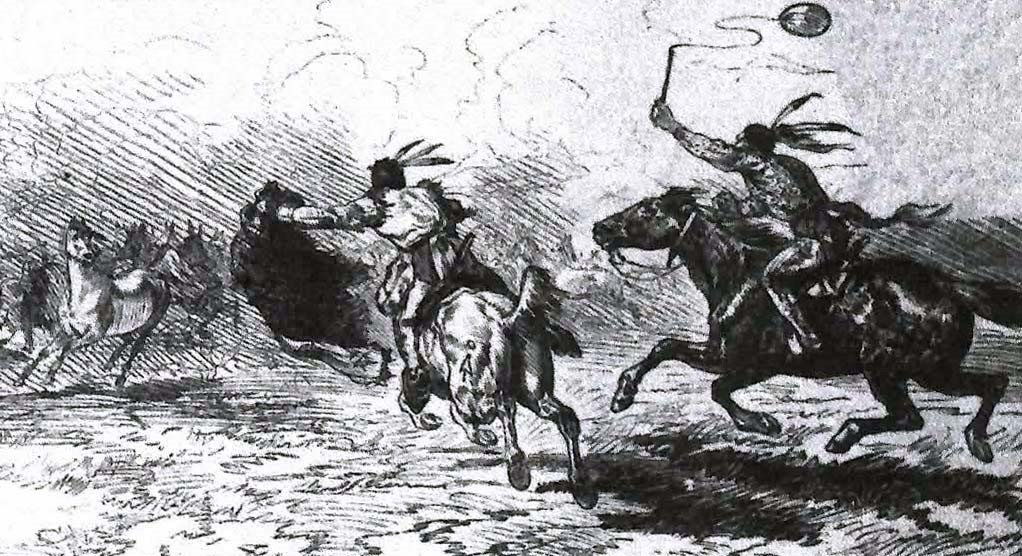
Although both sides were weary from the long chase, the war continued. The Army followed the tribe as they twisted their way through the area that became Yellowstone National Park and stayed close behind as the Indians headed north. The Nez Perce strategy had changed. Realizing that the Army wouldn’t give up and with no help from their allies, the tribe rushed toward the Canadian border. After the famous Battle of Little Big Horn the year before, the Canadian government had given Sitting Bull, the Sioux leader, a safe place to live. The Nez Perce thought that if they could make it across the border, they could join the Sioux. Although they would be far from home, at least their families would be safe and no longer be pursued by the U.S. Army, which was still hot on their heels.
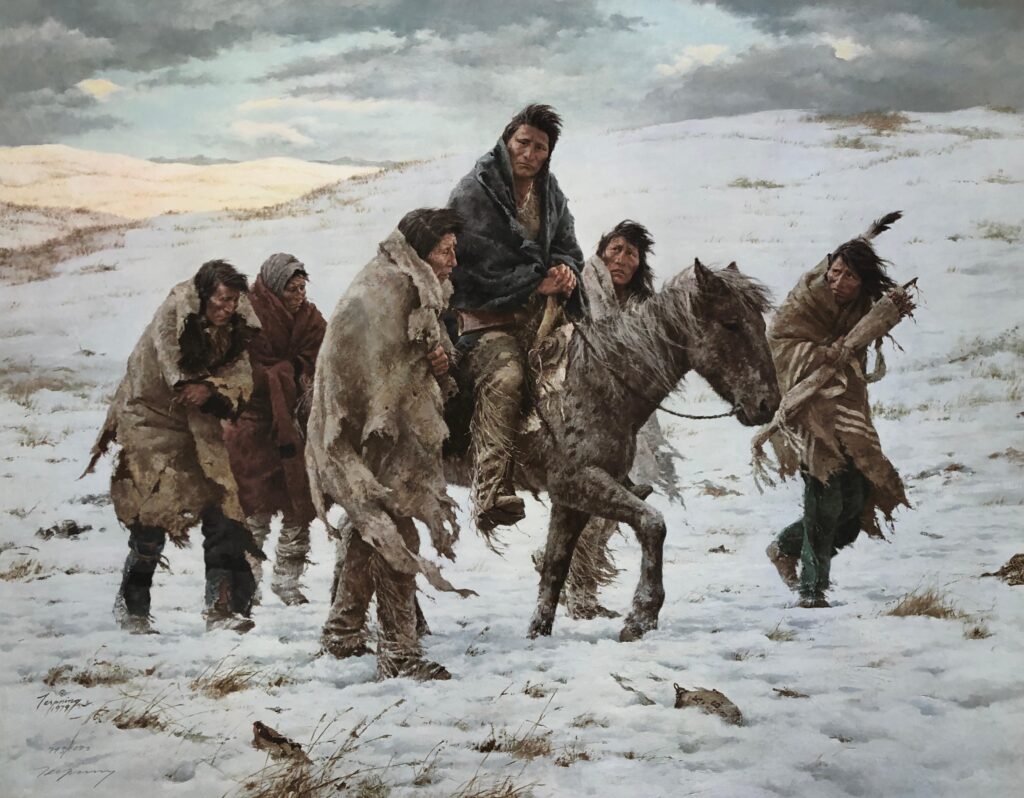
Finally, within a day or two south of the border, the two sides fought their final battle. On September 30, Col. Nelson Miles caught up to the Indians on the edge of the Bear Paw Mountains. The Nez Perce were surprised, but quickly sprang into action. They dug pits and ditches with whatever tools they had and built stone barricades to protect themselves from the soldiers’ guns. The battle was long, stretching out over five days, and the Nez Perce were tired. Food had run out. The weather was cold and wet, and there wasn’t any fuel to make fires. The only two Chiefs left alive were White Bird and Joseph. Joseph knew that if the tribe kept fighting, it would mean more death and misery. He made the decision to negotiate a truce and end the war. Although chief White Bird and a few others escaped to Canada, Joseph and the remaining Nez Perce made a deal with Col. Miles. The tribe agreed to stop fighting and return to the reservation the U.S. government had created.
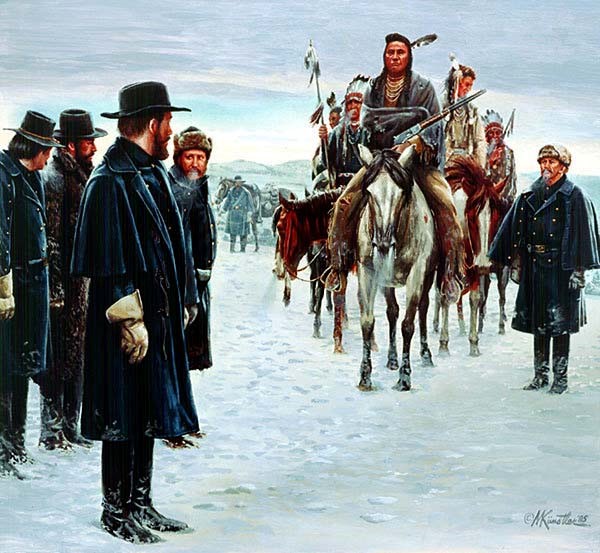
At the surrender, Joseph delivered one of the most eloquent speeches in American history. “Tell Gen. Howard; I know his heart. What he told me before I have in my heart. I am tired of fighting. Our Chiefs are killed, looking glass is dead. The old man are all killed. It is the young men who say yes or no. He led the young men is dead. It is cold, and we have no blankets. The little children are freezing to death. My people, some of them, have run away to the hills and have no blankets, no food; no one knows where they are, perhaps freezing to death. I want time to look for my children and how many of them I can find. Maybe I shall find them among the dead. Jeremy, my Chiefs, I am tired; my heart is sick and sad. From where the sun now stands, I will fight no more forever.”
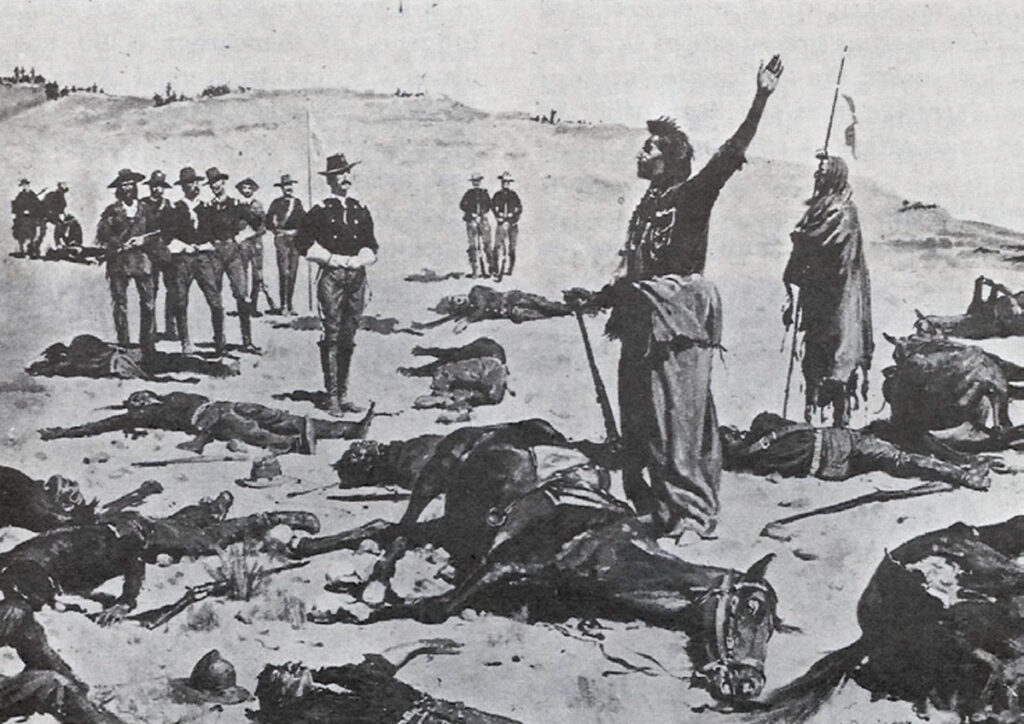
For three months, Chief Joseph had led his people on a 1,600-mile flight to Canada across four states and multiple mountain ranges with four separate U.S. military units in pursuit. Chief Joseph and his party repeatedly turned the tables on numerically superior forces. They eluded and out-fought 2,000 U.S. Army soldiers in 13 battles before finally surrendering in a Montana snowstorm, just 40 miles from the Canadian border. Only 418 men, women, and children were left.
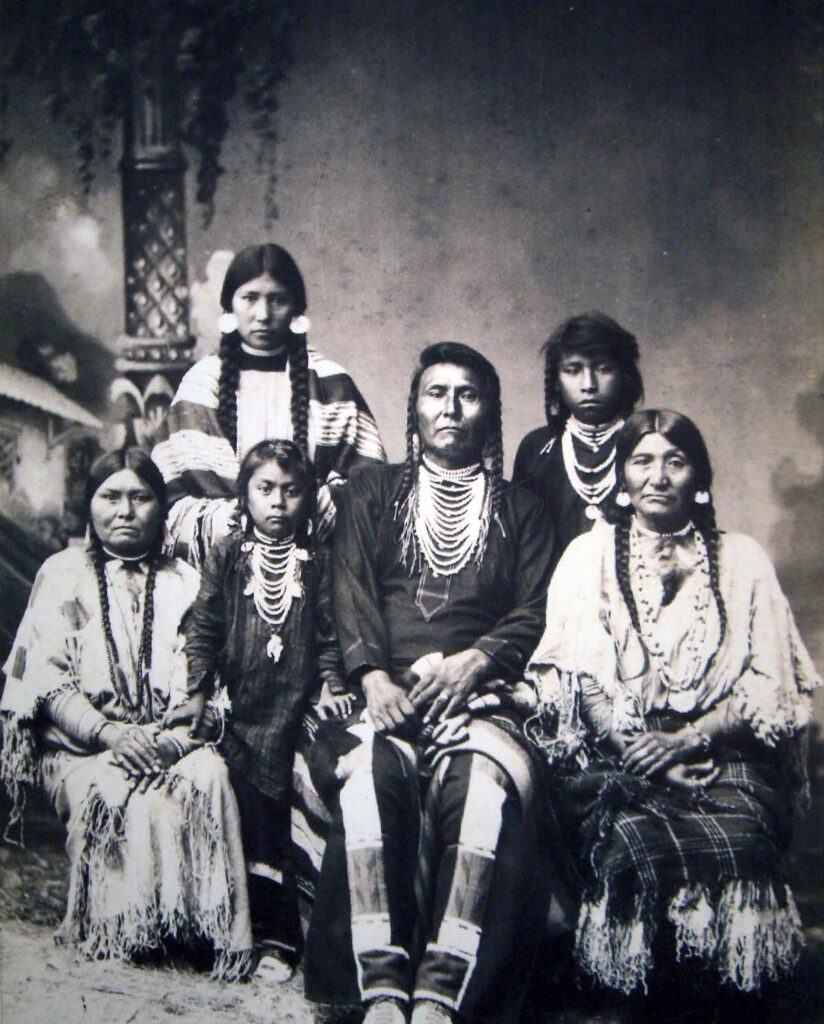
Unfortunately, the government broke its promise – again. Joseph and his remaining group were relocated to Oklahoma instead of the Nez Perce reservation. On the trip, half the tribe died from disease. It was in Oklahoma where they spent eight years separated from their homeland and the rest of the tribe. Eventually, the group was allowed to return West, but Joseph and his family were forced to stay on a different reservation in Washington.
On September 21, 1904, at the age of 64, Chief Joseph died in exile, ending a very tragic and sad chapter in our country’s history.
The Nez Perce War Left a Lasting Legacy
The Census Bureau in 1894 counted over 40 wars during the 57 years between 1789 and 1846, which killed 19,000 whites and about 30,000 Indians; however it did note that the number of Indians killed was likely 50% higher than this, for a total of 45,000.
In American history books, the Indian Wars have often been treated as a relatively minor part of the military history of the United States and were long treated from the point of view of the United States. After 1970 younger historians took the Indian point of view in their writings about the wars, dealing more harshly with the U.S. government’s failures and emphasizing the impact of the wars on native peoples and their cultures.
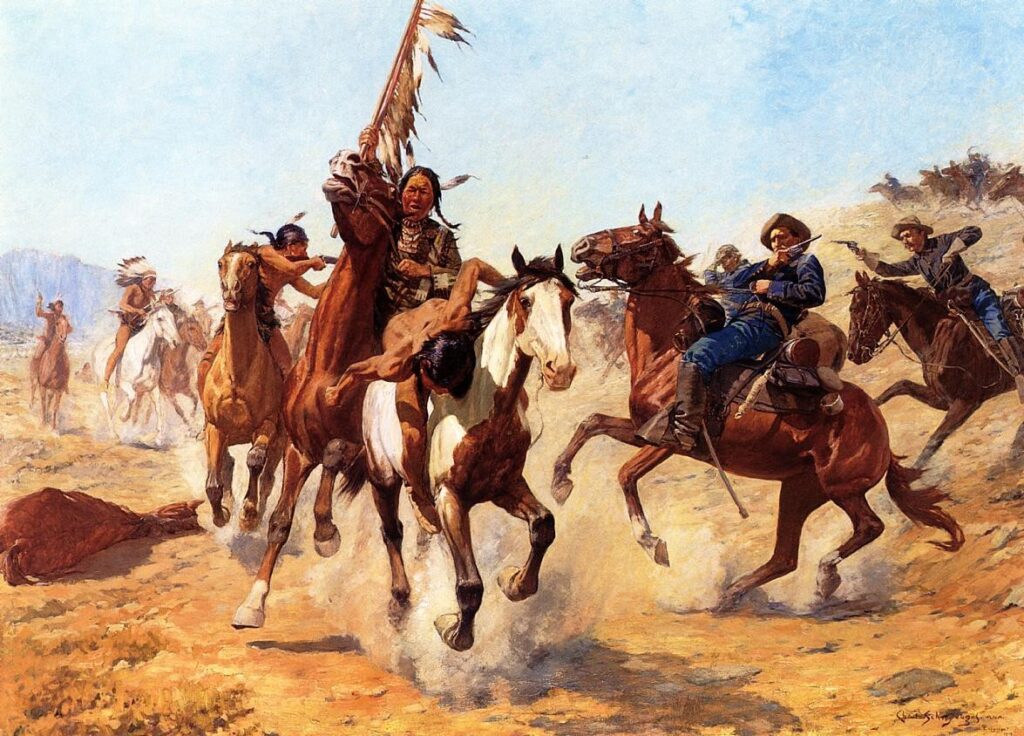
One example these young writers point to was the Massacre at Wounded Knee in 1890. Stirred by a spiritual revival centering on the “Ghost Dance” (meant to reunite the living with spirits of the dead, bring the spirits of the dead to fight on their behalf, make the white colonists leave, and bring peace, prosperity, and unity to native peoples throughout the region), a group of Lakota Sioux left their reservation in South Dakota.
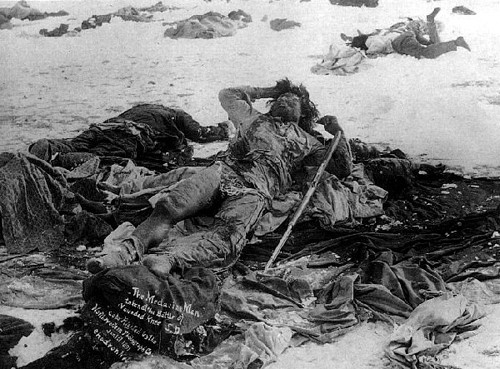
On December 29, 1890, as they returned to surrender, a scuffle broke out. Hearing a shot, soldiers fired, killing more than 200 men, women, and children – the last to die in the Indian Wars.
Two weeks before Chief Sitting Bull had died at the hands of U.S. soldiers.
Read About Other Battlefield Chronicles
If you enjoyed learning about the Nez Perce War, we invite you to read about other battlefield chronicles on our blog. You will also find military book reviews, veterans’ service reflections, famous military units and more on the TogetherWeServed.com blog. If you are a veteran, find your military buddies, view historic boot camp photos, build a printable military service plaque, and more on TogetherWeServed.com today.
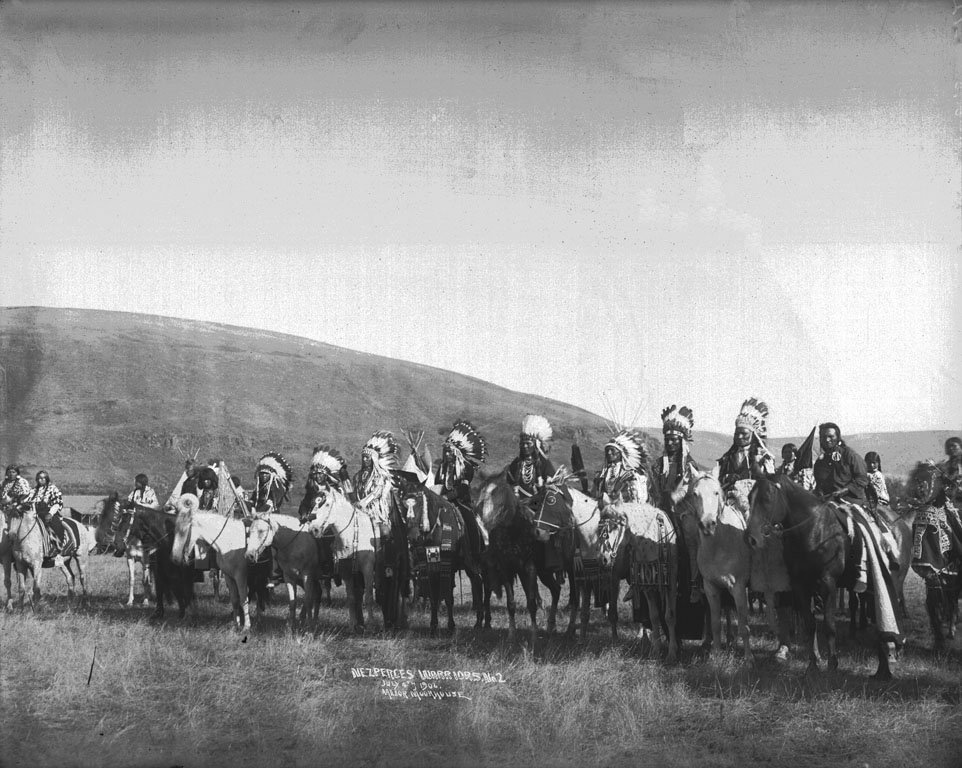
Very good to know once again how a group of native americans utilized brains over brawn , nature over material, and also
spirit over greed to give us a wealth of knowledge about life vs death . This was great reading material . Thank you.
As usual the two faced U.S.government failed in it’s commitment to control white man’s greed. Thereby creating animosity that continues today.
It is past time we give back the lands belonging to Native Tribes.